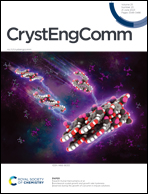Novel scandium-MOF nanocrystals as peroxidase-mimicking nanozymes for highly sensitive colorimetric detection of ascorbic acid in human serum†
Abstract
Emerging peroxidase (POD)-like nanozymes have been exploited to construct biosensors towards biomolecular detection. However, the enzymatic activity, sensing mechanism and detection method of the biosensors towards ascorbic acid (AA) analysis are still challenging research topics. Herein, a novel scandium-MOF (Sc-MOF) nanozyme is synthesized via a wet-chemical method. An efficient AA biosensor is developed owing to the POD-like characteristics of the Sc-MOF. The Sc-MOF nanozyme can convert hydrogen peroxide into hydroxyl radicals. Afterwards, colorless 3,3′,5,5′-tetramethylbenzidine (TMB) is converted into blue oxidized TMB by hydroxyl radicals. The Michaelis–Menten constants of the Sc-MOF nanozyme (Km = 0.013 mM for TMB and 0.246 mM for H2O2) are obviously superior to those of horseradish peroxidase. The AA concentration can be determined by putting forward a colorimetric method and an absorbance turn-off mechanism. The linear range of the Sc-MOF based colorimetric method is 0.2–20 μM. The limit of detection is 0.174 μM. The AA detection also demonstrates superior specificity and anti-interference features. Furthermore, the Sc-MOF-based biosensors are applied to qualitative and quantitative AA detection in human serum. The Sc-MOF nanozyme can inspire researchers to develop novel transition metal based biological enzymes and expand their applications in enzymatic biochemical reactions.



 Please wait while we load your content...
Please wait while we load your content...